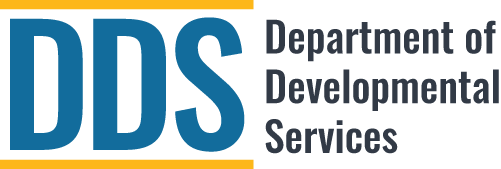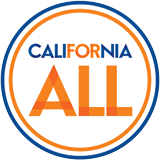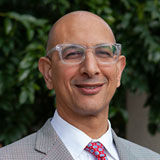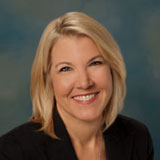Embracing a Future of Possibilities
Sonoma Development Center (SDC) provided person-centered planning, services, and supports to people with developmental disabilities so that they have the opportunity to achieve their potential.
VALUES
- A philosophy of serving others, dedicated to residents, staff, and stakeholders through timely, considerate, competent, and committed actions.
- An organization built on respectful relationships that honors choice, rights, trust, and communication.
- The responsible management of resources–fiscal, physical, and human–through planning and preservation. The promotion of leadership at all levels because we are responsible, innovative, dynamic, and inclusive.
SDC has a history in meeting the needs of people with developmental disabilities by providing an extensive array of services that promote ongoing health, learning, self-advocacy, and increased independence. SDC continuously offers innovative social, recreational, educational, vocational, and other programs.
Public Information
For public information please contact the Assistant to the Facility Director/Public Information Officer at 707-938-6143. Members of the media who would like a tour should complete and submit the Media Access Request and Agreement PDF form.
Additional Information
History
Sonoma Developmental Center (SDC) is the oldest facility in California established specifically for serving the needs of individuals with developmental disabilities. The facility opened its doors to 148 residents on November 24, 1891, culminating a ten-year project on the part of two prominent Northern California women who had children with developmental disabilities.In 1883, Julia Judah and Frances Bentley were responsible for forming the California Association for the Care and Training of Feeble Minded Children. Its aim was “to provide and maintain a school and asylum for the feeble-minded, in which they may be trained to usefulness.”
When the Santa Clara home became inadequate a few years later, the legislature appointed a commission and appropriated $170,000 to purchase land, construct facilities and handle commission expenses. The commission included Captain Oliver Eldridge, after whom the community of Eldridge is named. Following lengthy legislative battles over the proposed funding, the commission selected the present site: a 1640-acre parcel which featured an ample water supply, drainage, and two railroad lines that passed through the property.
The facility at Eldridge has undergone many significant changes, including four name changes. In 1909, the name was changed from the California Home for the Care and Training of the Feeble Minded to the Sonoma State Home. In 1953, Sonoma State Home became Sonoma State Hospital; and in 1986, the name was changed to Sonoma Developmental Center. Over the years, the facility has expanded several times, including two major expansions: A thirteen million dollar expansion program was initiated in 1948, and another five million dollars was appropriated in 1956. The most recent renovation took place between 1979 and 1982, during which all the living units were renovated at a cost of about one million dollars per building, primarily to improve safety, privacy and individualized care.
Many changes over the last 110 years include attitudes, philosophies, values, and beliefs in regard to the treatment of developmentally disabled people. There is one constant that ties the present and the future to every epoch of the Center’s history: As society’s understanding of developmental disabilities has improved, SDC has consistently responded by improving services. SDC has always been and will always be committed to continuous improvement of its comprehensive array of therapeutic services.
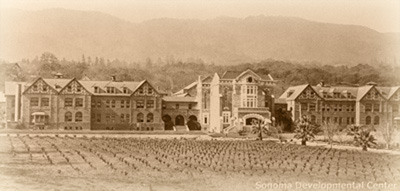
An Early Picture of Sonoma Developmental Center
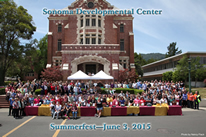
SDC Summerfest 2015
Program Descriptions
NF Services provides highly skilled staff trained in restorative nursing care, alternative positioning, range of motion, respiratory support, and assistance in activities of daily living. Adaptive equipment is utilized to maximize independence and self-reliance. Individuals participate in a variety of activities which focus on sensory stimulation, communication, socialization, and leisure. Staff support a compassionate, calm, and supportive environment.
ICF Services is committed to utilizing positive supports that include the individuals we serve. All individuals are provided opportunities to attend daily programs provided by Central Program Services and on-unit and off-campus activities. Individuals served are provided training opportunities to achieve their life goals, attain increased independence, exercise their rights and self-advocacy and make choices in their daily lives.
Location & Directions
Concord Area I-680 to SDC:
Take I-680 towards Martinez approximately 7 miles. After you cross the Benecia Bridge, stay in the left lane, which turns into I-780. Travel another 7 miles and take the I-80 exit towards Sacramento. Merge onto I-80 and travel another 3 miles. Take the Marine World exit which will go up over the freeway. Stay in the left lanes. Travel another 2 miles (the 3rd intersection light) and make a right turn onto Highway 29. Continue northbound on Highway 29 approximately 10 miles. Stay to the left when you reach the Y intersection and go towards Calistoga. Travel approximately another mile to the intersection and turn left onto Highway 12 towards Sonoma. Travel another 5 miles to the next intersection light. Right before the intersection, veer to the right onto Napa Road (just before Stornetta’s Dairy). Travel another 5 miles on the winding road (the road changes names), but do not make any turns until you reach Arnold Drive. Turn right onto Arnold Drive and travel approximately 6 miles and it will take you right into Sonoma Developmental Center.
Vallejo to SDC via Highway 12:
Travel north on Sonoma Boulevard until it turns into Highway 29. Continue northbound on Highway 29 approximately 10 miles. Stay to the left when you reach the Y intersection and go towards Calistoga. Travel approximately another mile to the intersection, then turn left onto Highway 12 to Sonoma. Travel another 5 miles to the next intersection light. Right before the intersection, veer to the right onto Napa Road (just before Stornetta’s Dairy). Travel another 5 miles on the winding road (the road changes names), but do not make any turns until you reach Arnold Drive. Turn right onto Arnold Drive and travel approximately 6 miles and it will take you right into Sonoma Developmental Center.
Vallejo to SDC via Highway 37:
At the intersection of Sonoma Avenue and Highway 37, turn onto Highway 37 and travel towards Novato for about 6 miles. At the lighted intersection, make a right onto Highway 121. Follow Highway 121/12 as it twists and turns. At the first Y intersection, go straight to the 4-way stop and continue on Hwy 116. At the next Y in the road, stay to the right as it turns into Arnold Drive. Follow Arnold Drive approximately 7 miles and it will take you into Sonoma Developmental Center.
I-80 Oakland/Berkeley to SDC:
Travel I-80 east to the Richmond Bridge exit. After crossing the bridge, get on 101 north. Travel on 101 north about 18 miles until you come to the Highway 37 Vallejo/Napa turnoff. Take the exit and travel 4 miles on Highway 37; at the 2nd intersection light, make a left onto Highway 121. Follow 121 as it twists and turns. . At the first Y intersection, go straight to the 4-way stop and continue on Hwy 116. At the next Y in the road, stay to the right as it turns into Arnold Drive. Follow Arnold Drive approximately 7 miles and it will take you into Sonoma Developmental Center.
Golden Gate Bridge to SDC via Highway 101:
Travel north on Highway 101 for 22 miles until you reach the Highway 37 Vallejo/Napa turnoff. Take the exit and travel 4 miles on Highway 37; at the 2nd intersection light, make a left onto Highway 121. Follow 121 as it twists and turns. At the first Y intersection, go straight to the 4-way stop and continue on Hwy 116. At the next Y in the road, stay t the right as it turns into Arnold Drive. Follow Arnold Drive approximatly 7 miles and it will take you into Sonom Developmental Center.
Sacramento Area to SDC via I-80:
Travel west on I-80 towards San Francisco for approximately 42 miles. About 5 miles past Fairfield, take the Napa exit onto Highway 12. Travel approximately 9 miles on Highway 12 until you reach the intersection of Highway 12 and Highway 29. Make a right onto Highway 29 and travel another mile. You will to come a Y intersection; stay on the left going towards Sonoma and Calistoga. Travel another mile until you see the sign for Highway 12 to Sonoma. Turn left onto Highway 12. Travel another 5 miles to the next intersection light. Right before the intersection, veer to the right onto Napa Road (just before Stornetta’s Dairy). Travel another 5 miles on the winding road (the road changes names), but do not make any turns until you reach Arnold Drive. Turn right onto Arnold Drive and travel approximately 6 miles and it will take you into Sonoma Developmental Center.
Eldridge Press
Sonoma Developmental Center generates the Eldridge Press whose audience includes residents and their families, service providers, and other stakeholders. Articles feature the people who live and work there, and include information about the facility, partnerships with other service providers, facility-wide events, and activities and services provided at the Center. We hope you enjoy reading the current issue of the Eldridge Press!
| 2016 | 2015 | 2014 | 2013 | 2011 | 2010 | 2009 | 2008 |
|---|---|---|---|---|---|---|---|
| Summer 2016 (PDF) | Fall 2015 (PDF) Summer 2015 (PDF) March 2015 (PDF) January 2015(PDF) | November 2014 (PDF) April-May 2014(PDF) March 2014(PDF) February 2014 (PDF) January 2014 (PDF) | Special Edition – September 2013 (PDF) August 2013(PDF) July 2013 (PDF) June 2013 (PDF) May 2013 (PDF) March – April, 2013 (PDF) Special Edition-April 2013 (PDF) January – February, 2013 (PDF) | 3rd and 4th Quarter 2011 (PDF) 2nd Quarter 2011 (PDF) 4th Quarter 2010 and 1st Quarter 2011 (PDF) | 2nd & 3rd Quarter 2010 (PDF) 1st Quarter 2010 (PDF) | 4th Quarter 2009 (PDF) 3rd Quarter 2009 (PDF) April-June 2009 (PDF) January-March 2009 (PDF) | October-December 2008 (PDF) August-September 2008 (PDF) June-July 2008 (PDF) April-May 2008 (PDF) |
News & Updates
Contact Information:
- If you have questions concerning the closure process, please send an e-mail message to: sonoma.closure@dds.ca.gov.
- DDS contact information, specific to the closure of FDC, is available here.
- Public hearing – September 21, 2015 (2 Pages) PDF
- Transcript of Public Hearing Testimony – September 21, 2015 (164 Pages) PDF
- Public Hearing – July 18, 2015 (2 Pages) PDF
- Transcript of Public Hearing Testimony — July 18, 2015 (158 Pages) PDF
- Sonoma Settlement Agreement (10 Pages) PDF
- Attachment A-Statement Tasks (8 Pages) PDF
- Attachment B-California Department of Public Health (3 Pages) PDF
- DDS News Release on Settlement Agreement – July 1, 2015 (1 Page) PDF
May 6, 2017
- April 10, 2017 Invitation to the 5/6/17 Family & Conservator Information Session (1 Page) PDF
- AT&T Conference Transcript of the 5/6/17 Family & Conservator Information Session (101 Page) PDF
- Family & Conservator Information Session Agenda (1 Page) PDF
- Department of Developmental Services January 28 Meeting Recap(9 Page) PDF
- Developmental Center Closure Transition Definitions (1 Page) PDF
- Who Are the Regional Projects, or RRDPs?
- Regional Center Presentations:
- Regional Center of the East Bay (15 Page) PDF
- North bay Regional Center (14 Page) PDF
- Alta California Regional Center (13 Page) PDF
- Far Northern Regional Center (6 Page) PDF
- San Anderas Regional Center (2 Page) PDF
- Partnership Health Plan Handout (18 Page) PDF
January 28, 2017
- January 3, 2017 Invitation to the 1/28/17 Family & Conservator Information Sessions (2 Pages) PDF
- AT&T Conference Transcript of 1/28 Family & Conservator Information Session (145 Pages) PDF
- Family & Conservator Information Session Agenda (1 Page) PDF
- Department of Developmental Services Regional Center Map (1 Page) PDF
- Community Living Options Presentation (11 Pages) PDF
- Developmental Center Closure Transition Definitions (1 Page) PDF
- Who are the Regional Projects, or RRDPs? (1 Page) PDF
- Regional Center Presentations:
- Alta California Regional Center (ACRC)
- ACRC Presentation (12 Pages) PDF
- ACRC Home Profiles (2 Pages) PDF
- Far Northern Regional Center (FNRC)
- FNRC Presentation (14 Pages) PDF
- FNRC Home Profiles (1 Page) PDF
- Golden Gate Regional Center (GGRC)
- GGRC Presentation(17 Pages) PDF
- North Bay Regional Center (NBRC)
- NBRC Presentation (15 Pages) PDF
- NBRC Home Profiles (5 Pages) PDF
- Regional Center of the East Bay (RCEB)
- RCEB Presentation (23 Pages) PDF
- San Andreas Regional Center (SARC)
- SARC Presentation (13 Pages) PDF
- SARC Home Profiles (2 Pages) PDF
June 27, 2015
- June 8, 2015 Invitation to 6/27/15 Family & Conservator Information Session (2 Pages) PDF
- Summary of 6/27/15 Family & Conservator Information Session (7 Pages) PDF
- AT&T Conference Transcript of 6/27 Family & Conservator Information Session (164 Pages) PDF
June 4, 2015
DDS
-
- Who are Regional Projects, or RRDPs? (1 Page) PDF
- Descriptions of Community Living Options (5 Pages) PDF
- Special Incident Reporting Requirements – In the Community (1 Page) PDF
- A six-slide presentation for consumers to inform the closure plan for Sonoma Developmental Center is available here. (6 Pages) PDF
Other
- Directory of Regional Centers (website)
- Q & A from Senator McGuire’s 12-19-15 Meeting at SDC (10 Pages) PDF
- Parent Hospital Association (website)
- Developmental Center Closures: Transitioning Medi-Cal Eligible Beneficiaries to Managed Care (23 Page) PDF
Last modified: December 6, 2022
